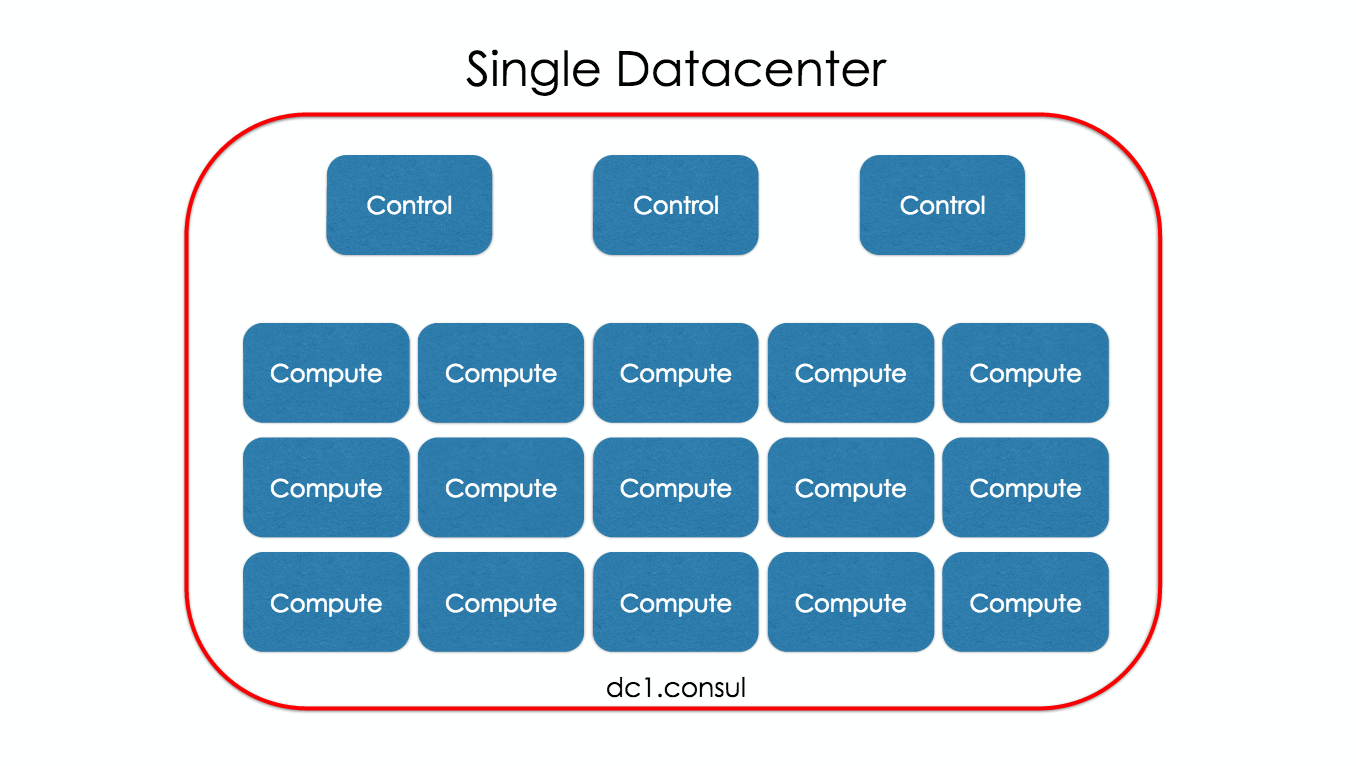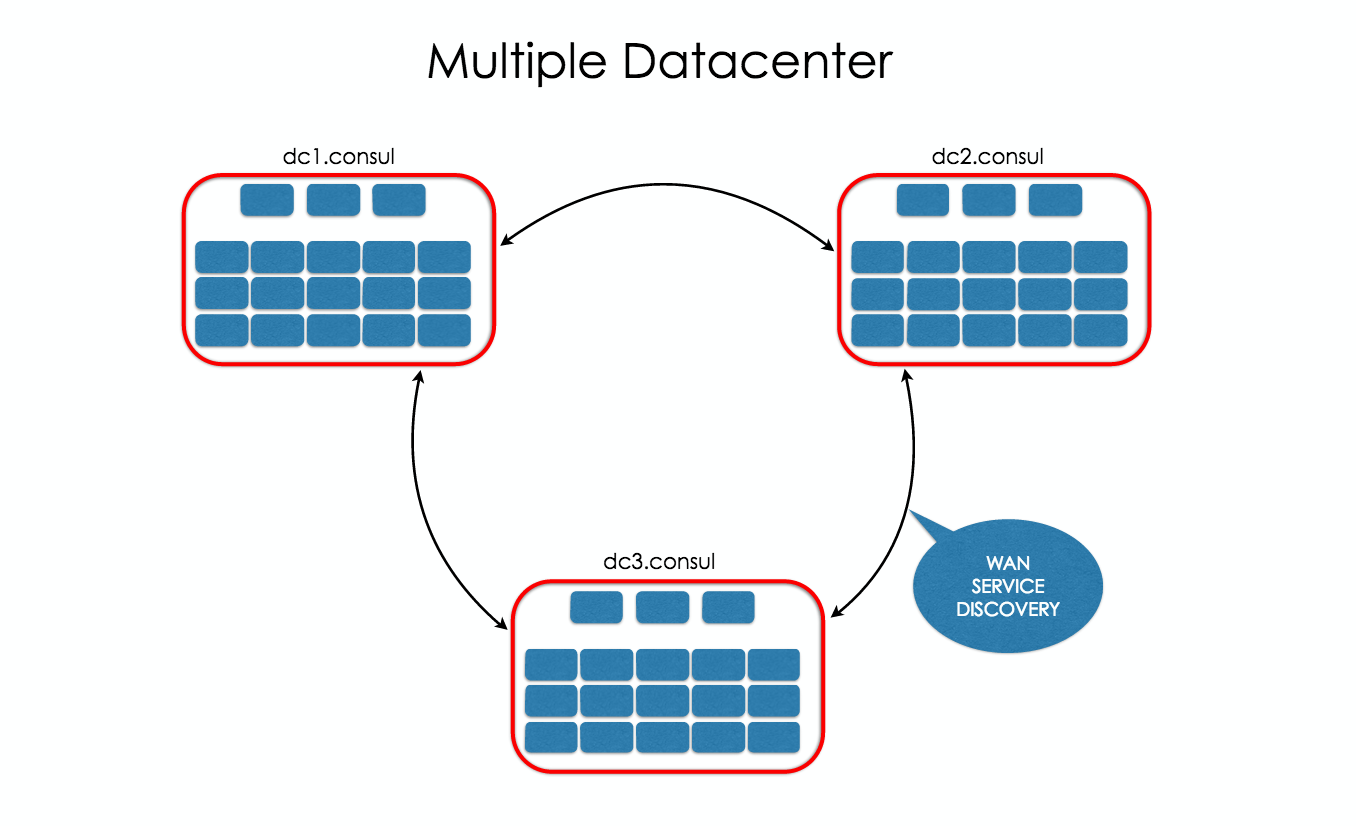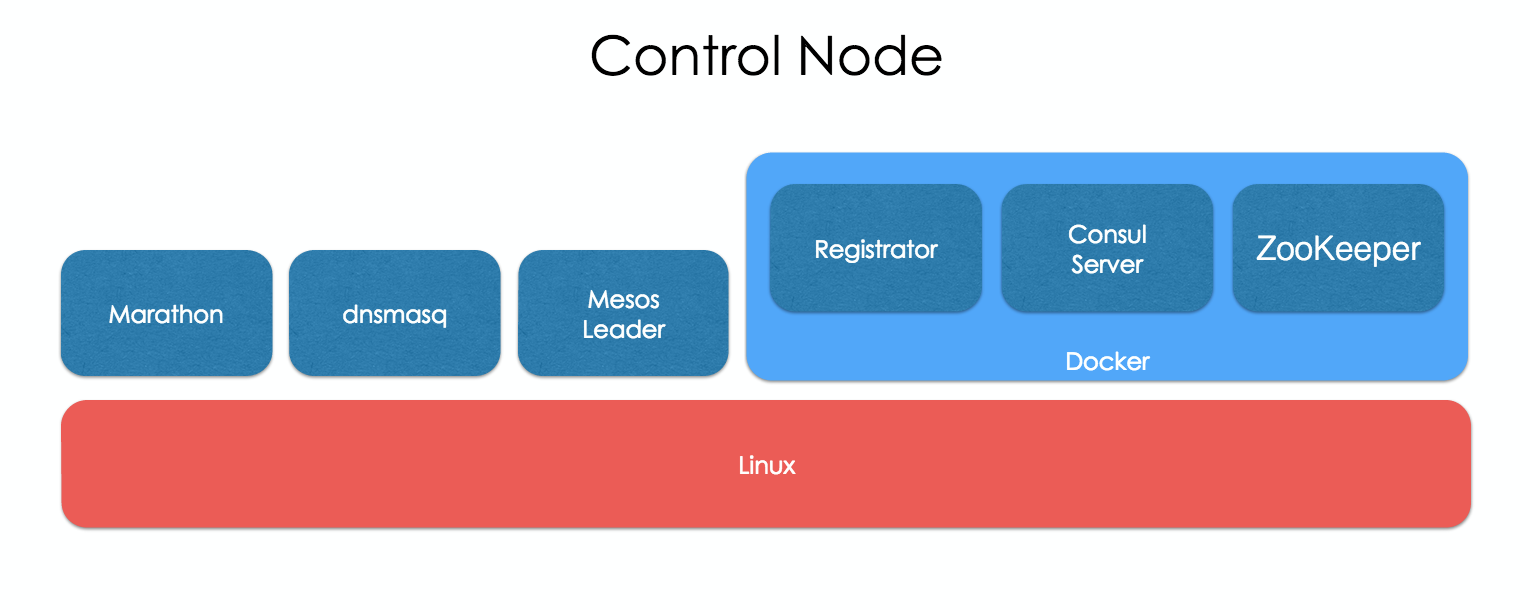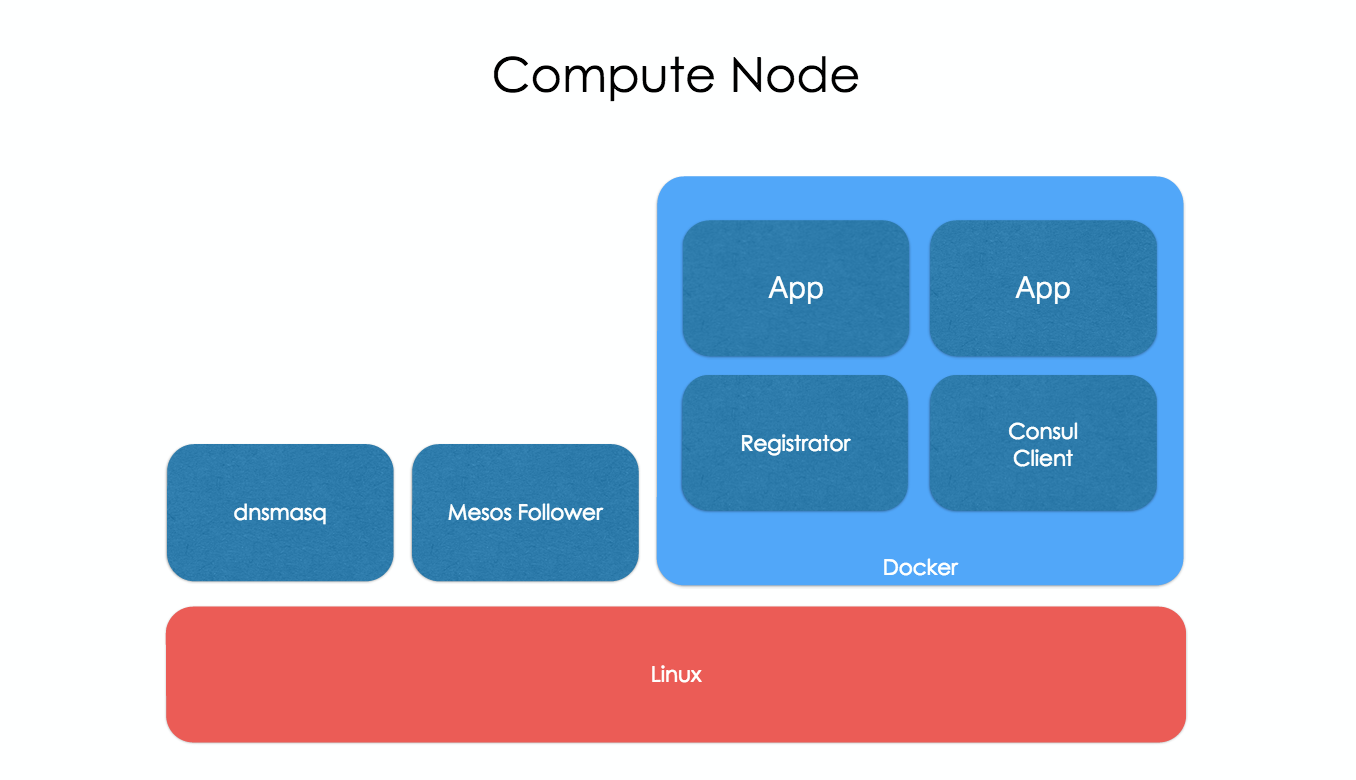Microservices infrastructure is a modern platform for rapidly deploying globally distributed services
##Features
- Mesos cluster manager for efficient resource isolation and sharing across distributed services
- Marathon for cluster management of long running containerized services
- Consul for service discovery
- Docker container runtime
- Multi-datacenter support
- High availablity
####Architecture The base platform contains control nodes that manage the cluster and any number of compute nodes. Containers automatically register themselves into DNS so that other services can locate them.
Once WAN joining is configured, each cluster can locate services in other data centers via DNS or the Consul API.
####Control Nodes
The control nodes manage a single datacenter. Each control node runs Consul for service discovery, Mesos leaders for resource scheduling and Mesos frameworks like Marathon.
In general, it's best to provision 3 or 5 control nodes to achieve higher availability of services. The Consul Ansible role will automatically bootstrap and join multiple Consul nodes. The Mesos Ansible role will provision highly-availabile Mesos and ZooKeeper environments when more than one node is provisioned.
####Compute Nodes
The compute nodes launch containers and other Mesos-based workloads. Registrator is used to update Consul as containers are launched and exit.
##Getting Started
A Vagrantfile is provided that provisions everything on a single VM. To run (ensure that your sytem has 4GB or RAM free):
vagrant up
###Deploying on multiple servers If you already have running instances (Centos7 is the only Linux distribution supported at this time), do the following to deploy the software:
- Install the software components:
sudo pip install -r requirements.txt - Create an Ansible inventory file. You can use the the following files as examples, replacing the host names with your instances:
inventory/1-datacenterinventory/2-datacenterMulti-DC with WAN join. Ensure that DCs have network connectivity to each other, especially for ports 8300-8302.
- Run
ansible-playbook -i <your_inventory_file> site.yml
The Getting Started Guide covers multi-server and OpenStack deployments.
##Documentation All documentation is located at https://microservices-infrastructure.readthedocs.org.
To build the documentation locally, run:
sudo pip install -r requirements.txt
cd docs
make html
Copyright © 2015 Cisco Systems, Inc. All rights reserved.
Released under the Apache 2.0 License. See LICENSE.



